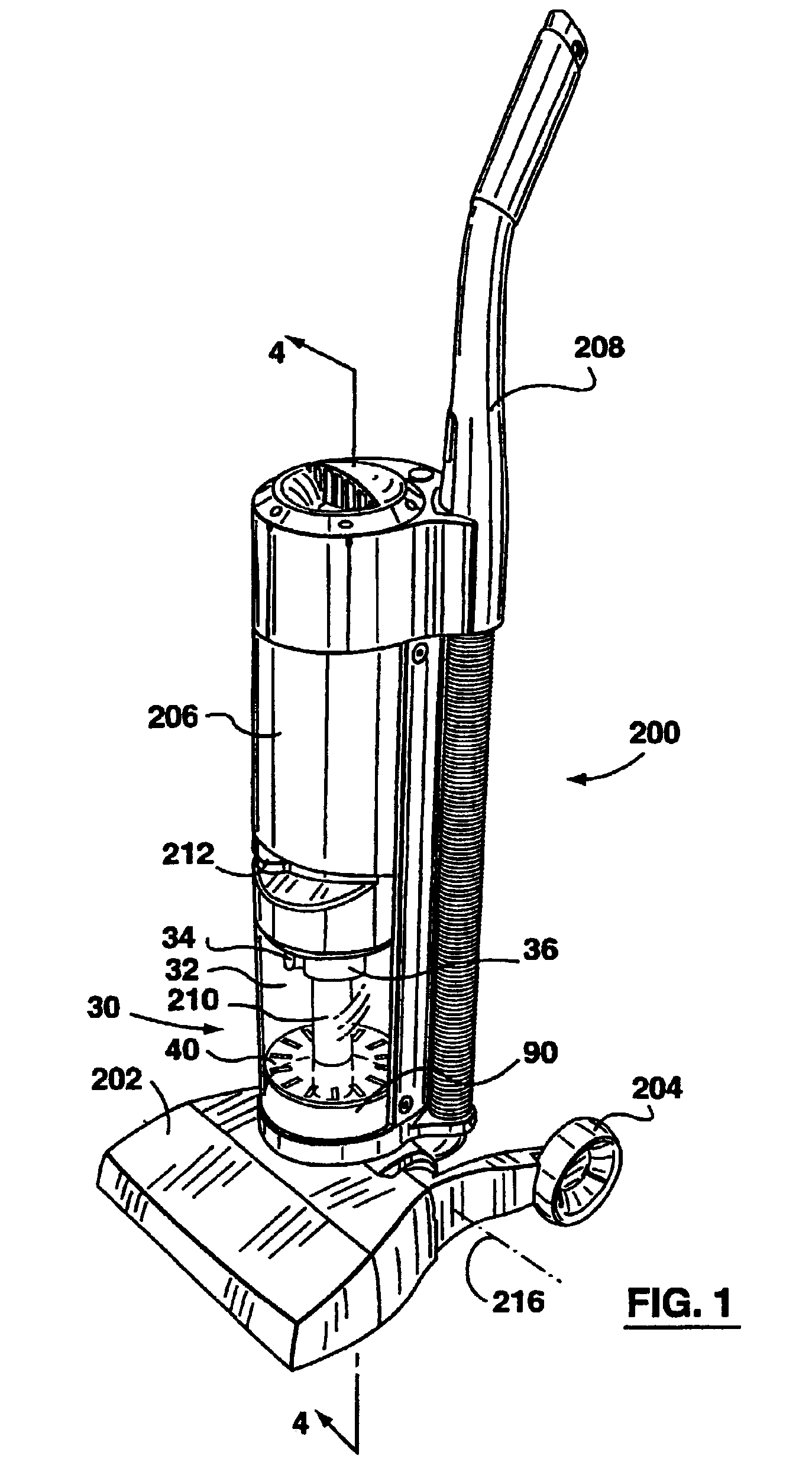Apparatus and method for separating particles from a cyclonic fluid flow
a technology of fluid flow and apparatus, applied in the direction of liquid separation agent, filter regeneration, dispersed particle filtration, etc., can solve the problems of localized turbulence, achieve the effect of improving efficiency, and reducing the reentrainment of separated materials
- Summary
- Abstract
- Description
- Claims
- Application Information
AI Technical Summary
Benefits of technology
Problems solved by technology
Method used
Image
Examples
Embodiment Construction
The improvements in cyclonic separators described herein may be used with or in place of cyclonic separation devices of any sort which are used to separate particulate material from a fluid stream. For example, they may be used with a fluid stream consisting of one or more gasses such as industrial dust collection systems (eg. flue gas scrubbing), they may be used to classify particles according to their size or they may be used with a fluid stream consisting of one or more liquids (eg. a hydrocyclone) or with fluid streams comprising a gas / liquid mixture. It will be appreciated that they these cyclone separators may be used in any manner known in the particle separation art.
For example, the separation member according to the present invention may also be employed in the classification and / or sorting of particles by size. Particles to be sorted are entrained in a fluid flow and introduced to a cyclonic separator having a separation member according to the present invention, the sepa...
PUM
| Property | Measurement | Unit |
|---|---|---|
| Fraction | aaaaa | aaaaa |
| Fraction | aaaaa | aaaaa |
| Angle | aaaaa | aaaaa |
Abstract
Description
Claims
Application Information
 Login to View More
Login to View More - R&D
- Intellectual Property
- Life Sciences
- Materials
- Tech Scout
- Unparalleled Data Quality
- Higher Quality Content
- 60% Fewer Hallucinations
Browse by: Latest US Patents, China's latest patents, Technical Efficacy Thesaurus, Application Domain, Technology Topic, Popular Technical Reports.
© 2025 PatSnap. All rights reserved.Legal|Privacy policy|Modern Slavery Act Transparency Statement|Sitemap|About US| Contact US: help@patsnap.com



